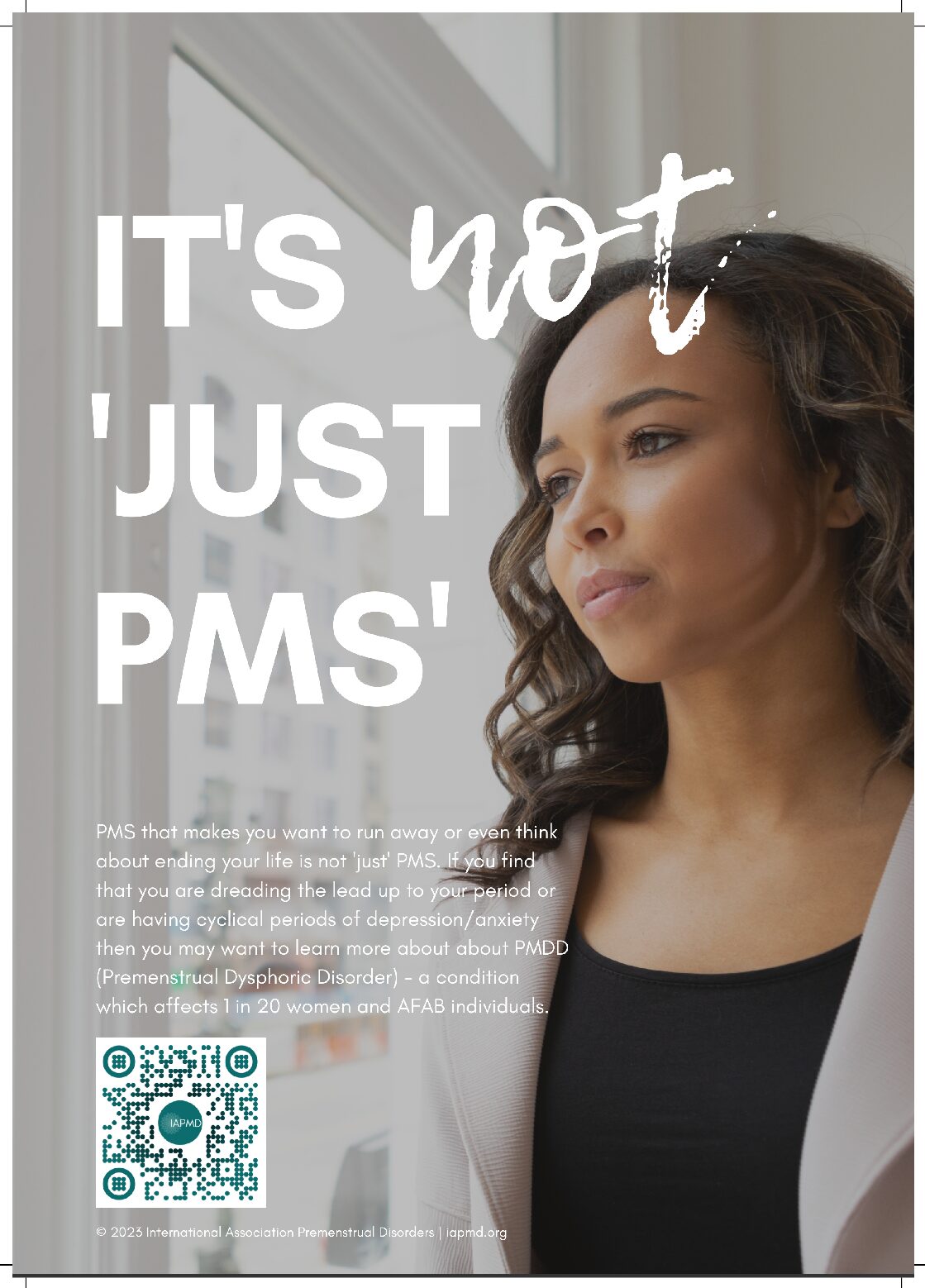For about 5.5% of people who menstruate and are of reproductive age, their menstrual cycles bring on even more challenges. In a society that often stigmatizes menstrual cycles, nor has a lot of research and remedies available, my guess is that number is even higher and menstruating people are struggling in silence.

Do you have a higher sensitivity to emotions like anger, sadness, rejection right before your period? Do you tend to have suicidal ideation, increased anxiety, lack of motivation, lack of interest in activities, changes in appetite, difficulty concentrating, trouble with sleep (either too much or too little), feeling overwhelmed in the days or week leading up to your period? If any of this resonates with you, you may have something called Premenstrual Dysphoric Disorder, or PMDD.*
PMDD is a hormone-based mood disorder that typically occurs in the luteal phase of your menstrual cycle and subsides as menstruation (or your period) begins. Read here to better understand your menstrual cycle and what happens in your body. Many believe that PMDD is caused by hormone imbalance. Actually, research shows that PMDD is about how you respond to the hormonal fluctuations; those of us suffering with PMDD are more sensitive to the rise and fall of estrogen and progesterone that naturally occurs. Someone could have adequate levels of these hormones, some don’t, and still be diagnosed with PMDD. It’s how their body and brain react to them that causes distress and suffering. Healthcare professionals encourage a full ‘female’ blood panel to be done to make sure there aren’t any imbalances or other problems that could mimic PMDD.
Most people with PMDD have been misdiagnosed and misunderstood. The symptoms often mimic those of other mental health diagnoses: depressive disorders, anxiety disorders, bipolar disorders, panic disorders, etc. Many people go years being treated for something that they might not actually have. The key to PMDD is that the symptoms are only present during the days of ovulation and menstruation. The International Association for Premenstrual Disorders (IAPMD) currently reports that it takes an average of 12 years for someone to get an accurate diagnosis of PMDD.
One way we can change that is by normalizing the conversation around menstruation and disorders such as PMDD. That’s why IAPMD promotes PMD Awareness Month every April to raise awareness and reduce stigma surrounding premenstrual disorders.
The good news is that research is trying to better understand PMDD every day. While there is no one universal treatment option available, IAPMD lists possible avenues to explore with your healthcare providers. These include:

- Lifestyle Changes
- Diet and Nutrition
- Complementary Alternative Medicine
- Homeopathic Medicine
- Oral Contraceptives
- SSRIs
- Mood Stabilizers
- GnRH Agonists
- Oophorectomy/Hysterectomy
I think I might have PMDD. What Should I Do?
- One of the first things your healthcare provider should ask you is to track your cycle and symptoms to identify these patterns. Here are helpful trackers, both paper and digital versions!
- Use this IAPMD self-screen to identify your symptoms and help you start a conversation with your healthcare provider.
- Look for more information, resources, and support through the International Association for Premenstrual Disorders (IAPMD).
- Consider mental health therapy to help learn how to cope and manage these symptoms.
*Any information written on the internet should not be used in place of seeing a healthcare professional for thorough assessment and diagnosing. This is intended for informational purposes.

